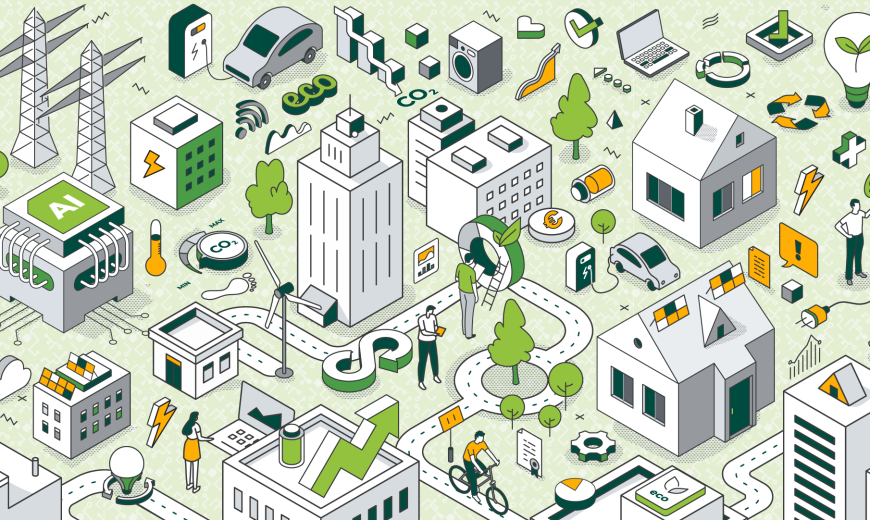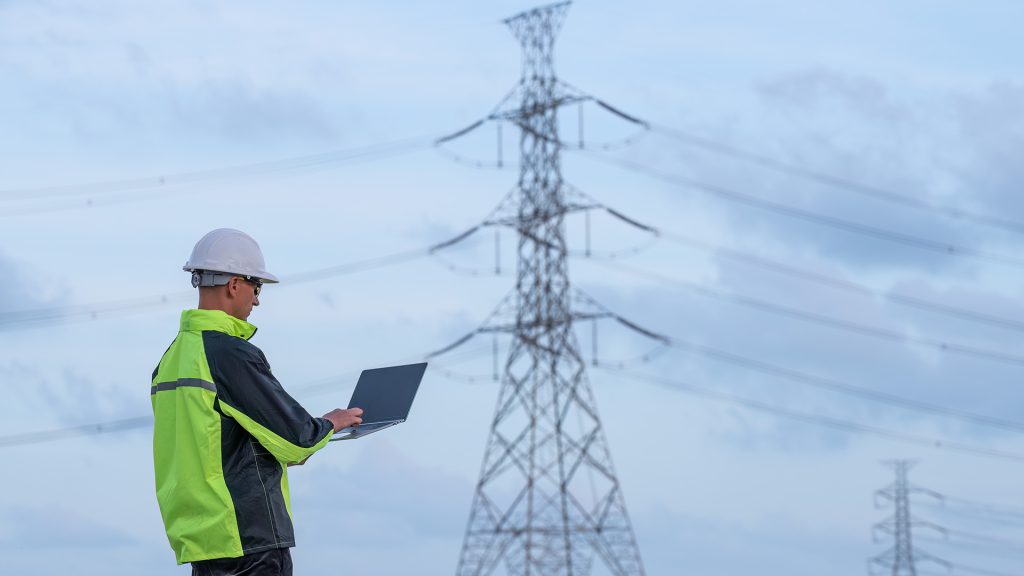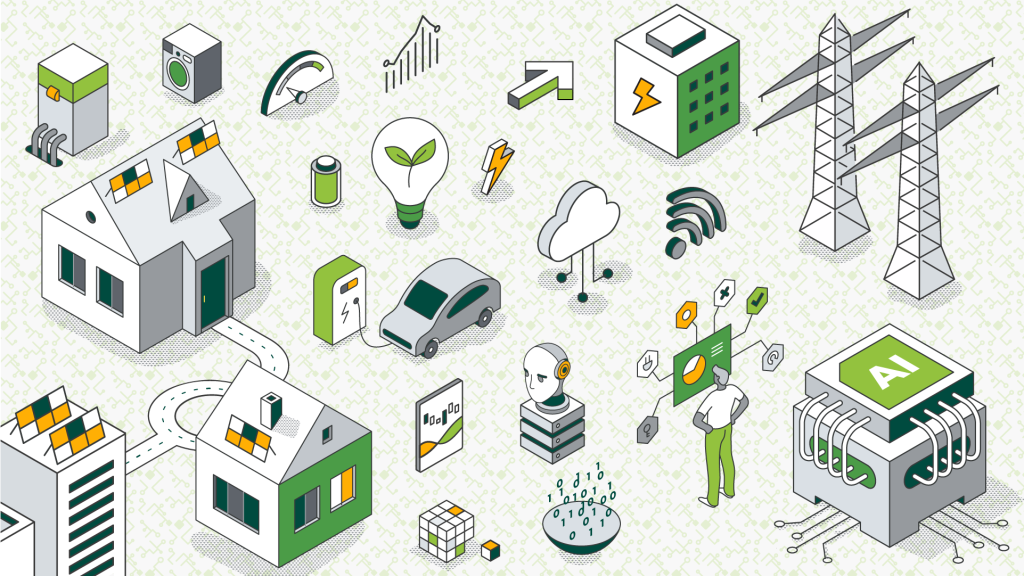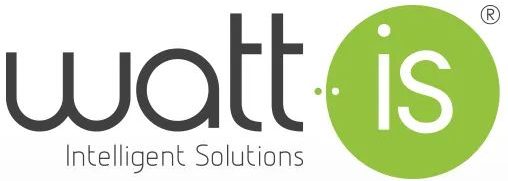
The electrical grid is under pressure due to the increasing widespread use of solar panels, heat pumps, electric vehicles and other electrical loads as a result of the environmental need for an energy transition.
As the number of electrical equipment in facilities (induction hobs, electric vehicles, heat pumps) grows, the demand for electrical energy increases. Due to our way of life, many of these devices are used simultaneously, which results in spikes in energy consumption. As a rule, demand peaks between 18h and 21h, causing network undervoltage and transformer overloads in certain areas of the network (aged network, long branches, etc.).
On the other hand, the increase in the number of solar panel installations connected to the grid leads to large peaks in the production of distributed electrical energy, between 11h and 14h, which in certain locations on the grid can cause constraints due to grid overvoltage. As a result, not all the energy produced can be used, due to the fact that the panels are turned off. There is a desynchronization between the peak of demand and the peak of supply. This desynchronization brings new challenges to network management and operation.
The quality of electrical supply is key to the energy transition, ensuring continuity and reliability of supply, which allows for the efficiency and viability of electrification of energy consumption. To improve quality, it is necessary to digitize and automate the network so that it becomes flexible to the needs of each moment.

The flexibility of the electrical system requires a spatial and temporal balance between electricity production and consumption. Already integrating the planning and operation of power systems, flexibility needs will increase significantly to ensure reliable operation and adequate security of supply in future electrical systems, characterized by a strong renewable component. The energy transition implies a paradigm shift in the electricity grid, moving from a scenario where supply adjusts to demand to the need to achieve a balance, in which demand must also adapt to supply.
To overcome the issue of supporting higher demands on the power grid, Distribution Systems Operators (DSO) main solution is to increase power grid capacity through infrastructure upgrades that may include investment in higher capacity lines and more efficient transformers to support “new “peaks in demand. Given ongoing cross-sector electrification, the additional network CAPEX investments required to support “new” peak demands would be enormous, and new, smarter network management practices and tools are needed to handle the anticipated increase in demand in the future.
AIDEN – A smarter and more flexible approach

Now imagine a situation where the DSO can request that a Renewable Energy Community (REC) be registered as a Flexibility Service Provider (FSP), to reduce its energy consumption and help reduce constraints on the network during periods of greater demand. REC participants (consumers, producers, producer-consumers, etc.) can jointly contribute to this need for DSOs. This can be achieved through the intelligent management of loads that have the possibility of having their operation changed over time (hence the concept of load shedding) and that can be aggregated and, thus, contribute to a request for flexibility from an DSO within the scope of a REC.
This overarching concept is what is being developed in AIDEN (AI-Driven Energy commuNities), one of the projects included in the Next Generation Storage (NGS) Mobilizer Program, that is being developed by a consortia that involves a local DSO, Cooperativa Elétrica do Vale D’Este (CEVE), two research institutions Instituto Superior Técnico (IST), and INESC-MN, together with Watt-IS.
AIDEN leverages on advanced data analytics models that go from energy consumption and production forecasts, flexibility potential forecasts, energy spot market price forecasts along with AI-powered models that control and actuate on flexible loads (including 2nd life storage solutions) to guarantee the maximization of benefits generated to each community participant.

With AIDEN it will be possible to test and demonstrate an operational REC where, as the basic functionality, the excess renewable production (generated form an existing decentralized solar PV plant) is shared between the REC participants and this is complemented via the introduction of a 2nd life community battery systems that coexists with community participants that have flexible loads (such as EVs, water heaters, water pumps, etc.). In this scenario and via AI-powered optimization models, both the flexible loads and energy storage system can be used to reduce the energy consumption of the overall community in peak periods (where the energy cost is higher), thus decreasing energy costs for the participants,. Additionally, these models are also capable of managing flexible loads aggregation to respond towards a flexibility request from the DSO to support in a grid congestion situation.
P2P (Peer-to-peer) models for energy sharing between REC participants and flexibility provisioning will also be modeled with different auctioning methods working jointly with dynamic sharing coefficients so that different market models scenarios may be simulated and tested to evaluate the potential benefits that dynamic internal market models may create when applied within the context of an AI-powered REC.

The AIDEN consortium is dedicated to advancing the circular economy by repurposing second-life energy storage systems, specifically those derived from outdated or damaged electric vehicle (EV) batteries, into cost-effective, stationary energy storage solutions for RECs. As EV batteries age, they lose their ability to provide the necessary power and autonomy required for efficient vehicle operation, and they may also present safety concerns due to the high demands of mobility. However, these batteries still retain significant potential for use in less demanding applications, such as stationary energy storage.
By refurbishing and integrating these second-life batteries into stationary systems, where space and weight are less of a concern, the consortium can compensate for any decrease in individual battery performance by accommodating a larger number of these refurbished batteries. This approach not only reduces the overall cost of energy storage but also supports sustainability efforts by recycling valuable materials and reducing the demand for new battery production. Furthermore, by optimizing the management of these second-life storage systems, AIDEN extends the lifecycle of existing batteries, reducing waste, and minimizing the environmental impact associated with mining and processing raw materials.
By deferring the disposal of used batteries, these repurposed systems help minimize the environmental footprint of battery waste, supporting a more circular economy. This sustainable approach aligns with global efforts to reduce carbon emissions, promote resource efficiency, and make energy storage solutions more environmentally friendly overall. In essence, AIDEN’s initiative not only offers a practical solution to extending the lifecycle of EV batteries but also contributes to the broader goal of environmental conservation, creating a more sustainable and cost-effective energy storage infrastructure.
In a nutshell AIDEN aims to develop, test and validate in a real-life environment, a new solution that has the power to bring together DSOs, consumers and prosumers (consumers that also produce in given time periods) within a Renewable Energy Community. Adopting a synergistic approach among these actors, AIDEN will leverage on the integration of AI-powered analytics to make it possible to reduce energy costs for REC participants while supporting DSOs in adopting smarter and more effective grid management practices that incentivize an active consumer participation and in parallel generates new revenue streams for REC participants (such as flexibility services).
Subscribe our Newsletter
Know more about "watt" we do
Our newsletter will keep you informed about all the latest happenings, upcoming events, exciting projects and developments. You’ll find it all in there.
Join us on this electrifying journey! You can easily unsubscribe at any time.

Copyright © 2022 Watt-IS. All Rights Reserved.

